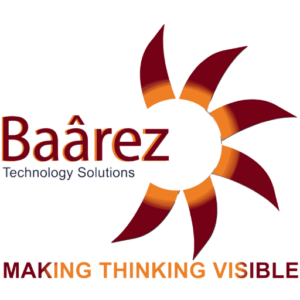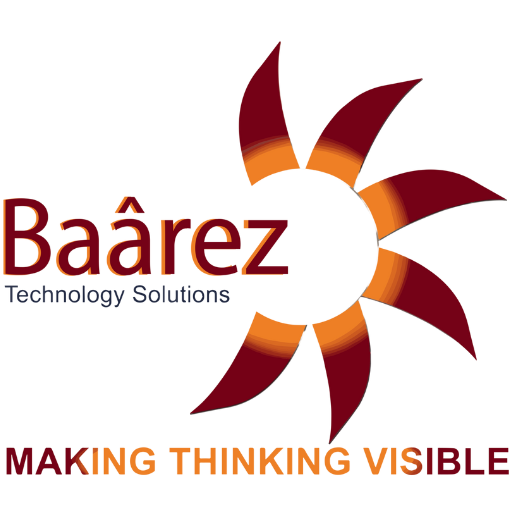
Have you ever wondered how companies manage the risks presented by outsiders, like suppliers or service providers? That’s where third party risk management comes into play. It might sound like a complex concept, but it’s something we encounter more often than we realize. Think of it as checking the weather before planning a day outdoors; it’s all about being prepared for what’s coming.
In this article, we’ll break down the essentials of third party risk management in a way that’s easy to understand and engaging. Whether you’re a business owner, a manager, or just curious about how companies protect themselves, you’ll find valuable insights here.
Table of Contents
ToggleIntroduction to Third Party Risk Management
So, what exactly is third party risk management? At its core, it involves identifying, assessing, and mitigating risks that come from dealing with external entities connected to your business. These entities could be suppliers, vendors, contractors, or even service providers.
Why Is Third Party Risk Management Important?
In today’s interconnected world, businesses can’t operate in isolation. They depend on numerous third parties for essential services and supplies. However, this interdependence introduces certain risks—financial, reputational, operational, and compliance risks.
Imagine you’re building a house. You hire several contractors for different jobs—electricians, plumbers, roofers. If one of them does a poor job, it doesn’t just affect that single part of the building; it could compromise the whole structure. That’s how third party risk can affect businesses, potentially leading to significant losses.
Identifying Third Party Risks
Identifying risks is the first step in the management process. This involves understanding who your third parties are, what services they provide, and how they impact your business operations.
Assessing Third Party Risks
Once risks are identified, the next step is risk assessment. This means determining how likely it is for a risk to occur and what the potential impact would be. This phase requires thorough analysis and often involves scoring risks based on their severity.
Mitigating Third Party Risks
Mitigation refers to the strategies and actions taken to reduce the likelihood of a risk event or minimize its impact. This could include diversifying suppliers, implementing strict contract terms, or conducting regular audits.
Monitoring Third Party Risks
Effective risk management doesn’t end at mitigation. Ongoing monitoring is crucial. This means keeping an eye on the risk landscape and adjusting your strategies as necessary.
The Role of Technology in Third Party Risk Management
With advancements in technology, managing third party risks has become more feasible. Automated tools and software can help in the continuous monitoring of third party behaviors and risks. These tools can alert managers to risks in real-time, allowing for prompt action.
Data analytics plays a critical role here, enabling businesses to make informed decisions by analyzing patterns and trends from large datasets. Furthermore, blockchain technology can enhance transparency and security in transactions with third parties, providing a tamper-proof record of interactions.
Challenges in Third Party Risk Management
Navigating the landscape of third party risk management is fraught with challenges. One of the main difficulties is the lack of visibility into the operations and practices of third parties. Often, companies do not have the same level of control over their third parties as they do over their internal processes. This can lead to unexpected disruptions and vulnerabilities.
Regulatory compliance is another major hurdle. As laws and regulations continuously evolve, keeping up can be taxing. Non-compliance can lead to hefty fines and damage to reputation, making compliance a critical aspect of third party risk management.
Finally, the volume of data that needs to be managed can overwhelm traditional management systems. Businesses need to process and analyze large amounts of information to effectively manage risk, which can be a significant operational burden without the right tools.
Best Practices in Third Party Risk Management
To effectively manage third party risks, companies should adhere to several best practices:
1.Establish Clear Policies and Procedures: Define what acceptable third party behavior looks like and the standards they must meet. This clarity helps in maintaining consistency and enforcing standards.
2.Conduct Thorough Due Diligence: Before entering into agreements with third parties, conduct detailed assessments to understand the potential risks involved. This can include financial health checks, reputation reviews, and security assessments.
3.Regular Reviews and Audits: Regularly review and audit third party engagements to ensure compliance with terms and conditions as well as regulatory requirements. This helps in early detection of potential issues.
4.Foster Strong Relationships: Building strong relationships with third parties can lead to better collaboration and quicker resolution of issues. Open lines of communication are essential.
5.Implement Robust Contractual Agreements: Contracts should clearly define the responsibilities, expectations, and repercussions in case of non-compliance. This legal groundwork is crucial for effective risk management.
Case Studies: Successful Third Party Risk Management
Example 1: A global manufacturing company implemented a third party risk management program that included regular audits and performance evaluations of all suppliers. This approach helped them reduce supply chain disruptions by 30% and improve compliance with safety standards.
Example 2: An IT firm used advanced analytics to monitor its software vendors continuously, successfully identifying a potential data breach before it occurred. Immediate actions taken based on the analytics saved the company from significant potential losses.
The Future of Third Party Risk Management
As globalization increases and ecosystems become more interconnected, the complexity of third party risk management is likely to grow. Future trends might include greater integration of artificial intelligence to predict and mitigate risks before they become evident. Companies may also see increased regulatory pressures globally, making compliance a more significant and challenging aspect of third party risk management.
What Baarez Technology Solutions Offers
Baarez Technology Solutions provides a comprehensive suite of tools designed to enhance the efficiency and effectiveness of third party risk management processes. Here’s how their solutions can transform your TPRM:
Automated Risk Assessment: Baarez Technology’s AI algorithms can automatically evaluate third party risks based on historical data, performance metrics, and real-time inputs. This not only speeds up the risk assessment process but also enhances its accuracy, ensuring businesses can make more informed decisions quickly.
Continuous Monitoring: Leveraging AI, Baarez Technology Solutions offers continuous monitoring capabilities. Their systems continuously scan and analyze activities and reports from third parties, flagging any anomalies or risk indicators immediately. This real-time monitoring helps companies respond to threats swiftly and mitigate potential damages effectively.
Regulatory Compliance Tracking: With AI-driven insights, Baarez Technology’s solutions help businesses stay compliant with evolving regulatory requirements. The technology tracks changes in legislation and automatically updates compliance frameworks, making it easier for companies to adjust their strategies and maintain compliance at all times.
Enhanced Data Analytics: Baarez Technology’s advanced analytics capabilities allow companies to uncover trends and patterns in third party interactions that might elude traditional analysis. By processing vast amounts of data, businesses can predict potential future risks and craft proactive strategies to address them.
Supplier Performance Management: Beyond risk management, Baarez Technology Solutions also enhances supplier relationship management by providing detailed insights into supplier performance. This helps companies identify high-performing suppliers and foster stronger collaborations, while also pinpointing underperformers for further review or replacement.
Frequently Asked Questions
-
1. What are some common types of third party risks?
- Operational Risks: Delays, disruptions, or failures in services provided by third parties.
- Reputational Risks: Negative public perception caused by poor service or product quality from a third party.
- Compliance Risks: Violations of laws and regulations that could lead to fines or legal issues.
- Financial Risks: Potential financial losses due to the third party's poor financial management or fraud.
-
2. How often should risk assessments be conducted?
Risk assessments should be a regular part of the business cycle, typically conducted annually or whenever there are significant changes in the business environment or within the third party's operations.
-
3. Can third party risk management help in cost savings?
Yes, by proactively identifying and mitigating risks, businesses can avoid costly disruptions and liabilities, thereby saving on unexpected expenses.
-
4. What is a third party risk management framework?
A third party risk management framework is a structured approach that outlines the processes for identifying, assessing, mitigating, and monitoring risks associated with third parties.
-
5. Why is continuous monitoring important in third party risk management?
Continuous monitoring helps businesses stay ahead of potential risks by providing ongoing insights into third party activities and risk exposures, allowing for timely interventions.


